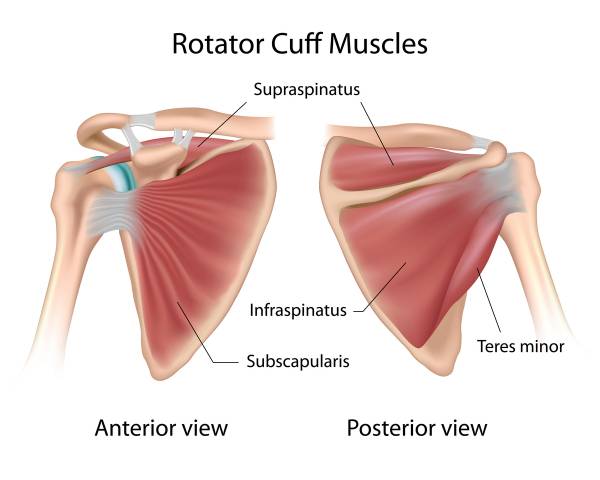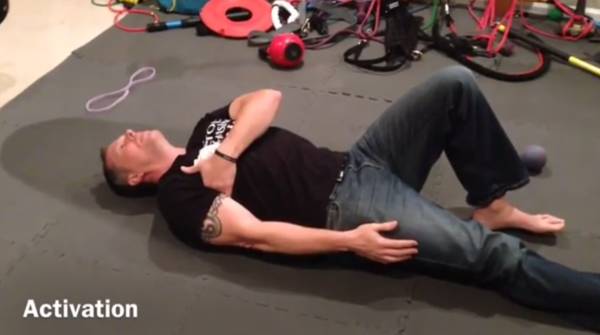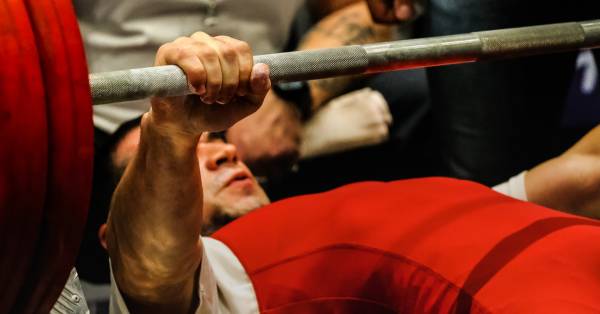Bench pressing is not a just chest exercise. There is no break in living matter. There are no empty spaces between tissue layers and body parts. When you lie down on the bench to move that weight, the first thing you have to do is grab it. If you don’t, it’s not going anywhere. Immediately, your arms, shoulders, core, and feet react to grip input. The brain and body prepare to lift a load and control the outside forces acting upon it.
So what happens when Universal Chest Training Day arrives on Monday, you lift that bar off the rack, and shoulder pain hits you? BOOM!
Getting to the Source of Shoulder Pain
I’ve been there. It sucks. You were ready to blast into the best workout and now this happens. What now? The first thing you should do is stop. Pain is a request for change. A change in how you move. Pain in movement indicates a dysfunction in the ability of your body to absorb, direct, generate, and release force.
Grasping the bar sends force down the arm, preparing the shoulder for load. Lifting the bar and holding it over the chest directs and disperses force (weight) into the shoulder joint and core. Eccentric lowering and concentric pressing generates and releases force. If there is a dysfunction in this force transmission system, then soft tissue tightness, joint misalignment, decreased durability, and pain may occur.
“There are many variables in shoulder pain. If you experiencing pain, it’s always a good idea to contact and work with a qualified healthcare professional in your area.”
A common culprit in shoulder pain with bench pressing is overuse of the stabilizing rotator cuff muscles, particularly the subscapularis and infraspinatus. These stabilizer muscles are often doing the work of primary movers in the shoulder (pectoralis major and latissimus).
The rotator cuff muscles are not designed for prime mover action. When they become overused, pain is the signal they use to tell you. A key to reversing this pain process is by helping the body use prime movers more. We can do this via the RAIL Reset System. This is a simple system I use for quick resets in painful movement patterns.

Using the RAIL Mobility System
RAIL stands for release, activate, integrate, and locomotion:
- Release the muscles and structures that are overworking.
- Activate the muscles and structures that are not doing enough.
- Integrate them into a simple movement pattern.
- Load the full pattern.
This video will show you how to do each step as it relates to shoulder pain. Detailed instructions are outlined below.
Release
The infraspinatus and subscapularis are often loaded with knots called trigger points. These points refer pain into the front and back of the shoulder. The infraspinatus is on the back part of the shoulder blade. Rolling against a massage ball, lacrosse ball, or tennis ball against the wall will help reduce trigger points and pain. You may often feel pain on the anterior part of the shoulder when doing so and this is normal for the referring pain pattern. It will begin to diminish within a minute.
“A common culprit in shoulder pain with bench pressing is overuse of the stabilizing rotator cuff muscles, particularly the subscapularis and infraspinatus.”
The subcapularis is on the front side of the shoulder blade and sits deep inside your armpit. Reach up inside of your armpit aiming towards the back (spine) and press. You should feel the subscapularis. You may feel pain in the posterior part of the shoulder. If you feel tingling in the arm, move the fingers to another location because that means you are on a nerve. Press and release the point of pain for approximately one to two minutes.
Activate
Now we activate the muscles that are not doing enough, most often the pectoralis major and latissimus dorsi.
- While standing, take the hand of the non-painful shoulder and place it between the opposite arm and your ribcage, high up in the armpit with your palm flat against the side.
- Try to squeeze that hand between the arm and side. Envision crushing your hand with your armpit. You should feel the lat and chest engage when doing so.
- Hold isometrically for five seconds and repeat three times.
- Repeat the release and activation sequence two times.

Integrate
Load the shoulder up in a closed-chain pattern by getting down on all fours. Hands below the shoulders and knees below the hips. Rock back and forth, sitting onto your heels and then coming forward so the shoulder ends at the fingertips. This loads up the core and integrates the shoulder in a more stable position than on the bench. Perform ten rocks.
Locomotion
Take a single step forward into a split stance, bringing the arms together at the elbows and then step back. Repeat with other leg. This integrates core to the shoulder. Do four repetitions total.
“A key to reversing this pain process is by helping the body use prime movers more. We can do this via the RAIL Reset System.”
Retest
Now go back and try benching again and see if the pain has decreased. If so, you are on the right track. It may take several RAIL resets to get the situation under control. There are many variables in shoulder pain. If you experiencing pain, it’s always a good idea to contact and work with a qualified healthcare professional in your area.







